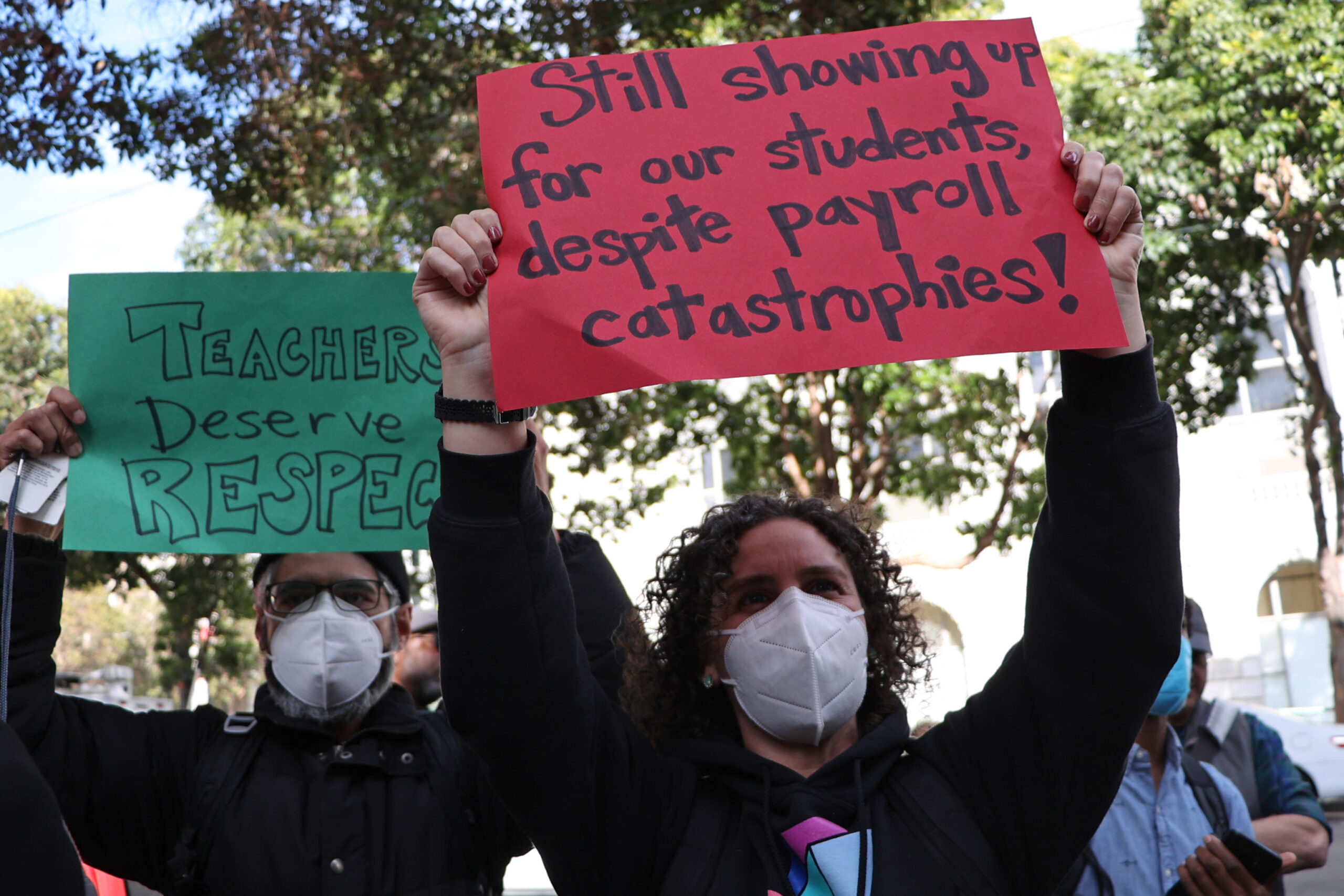School may be out for the summer, but payroll problems have persisted for San Francisco teachers.
The United Educators of San Francisco is aware of about 300 current cases of payroll problems, according to Vice President Frank Lara. The issues first emerged in January after switching to a new payroll system, EMPowerSF, which erupted to over 1,000 known cases of incorrect payments and cut-off benefits.
The latest batch, which the San Francisco Unified School District said it became aware of on July 6, includes 48 summer school staffers whose health care was halted. Benefits will be reinstated retroactively and the health plans will reimburse any out-of-pocket expenses staff paid as a result.
“Resolving EMPower issues remains a top priority,” spokesperson Laura Dudnick said in a statement. “We know that having to experience issues or confusion with the pay one deserves for their hard work and service has created significant hardships for many of our employees. While we know it doesn’t feel fast enough, we are making progress.”
About 100 of those are general pay stub problems, including cases where salaried teachers weren’t compensated correctly for not doing their timesheets, and instructors who didn’t receive stipends promised to assure a stable paycheck in July, Lara said.
Another estimated 150 cases revolve around incorrect retirement contributions, some of which were not deducted from the paycheck and bumped teachers into a higher tax bracket with bigger bills to pay.
To UESF, the recurring problem is a warning sign that the district isn’t prepared to onboard hundreds of new employees in early August.
“We’re raising the alarm,” Lara said. “If you haven’t figured out the staffing necessary to process that much paperwork, we know you’re going to encourage a situation where you want people standing on the first day and they’re not ready.”
Stephanie Crabtree, an SFUSD teacher of 14 years, can’t tell if she’s been paid accurately or fully reimbursed because it’s difficult for staff to understand the non-itemized pay stubs. She said she has colleagues who have lost medical coverage, including a friend on maternity leave who hasn’t been paid in months and still hasn’t had her insurance reinstated.
“The errors have costly and devastating consequences on our livelihood,” Crabtree wrote in an email. “We live in one of the most expensive areas in the country, we are underpaid, under appreciated, and burnt out. We are tired of being made into martyrs. We can no longer patiently wait or give the system a chance to work.”
After a union takeover of the central office in March, the district made agreements to pay interest on late payments and fees, among other requirements in contract. It later agreed to pay stipends to plug an anticipated gap in July paychecks, as required by its labor contract.
With errors dragging into July, some teachers like Crabtree have called for the end of the nascent EMPowerSF contract. The Board of Education recently approved another $2.7 million to extend the contract and technical support that comes with it.
The total cost of the contract now stands at $16.5 million.
Lara recognized that another shift would not be seamless and would likely not be timely.
“We understand that they’ve invested so much into the EMPower system but if they can’t make it work, they can’t legally keep the system,” Lara said. At the same time, he added, “If we pull the brakes now, everybody is going to get caught up. It would all be a crisis.”
Lara’s understanding of the problem is that it comes down to staffing, which district officials laid out in a postmortem of the situation in April.
He said he has since been told central office administrators plan to hire another 21 people to beef up the response and have benchmarks planned for two, four and six months out that would resolve most of the problems. Eliminating timesheets for salaried employees may be included.
